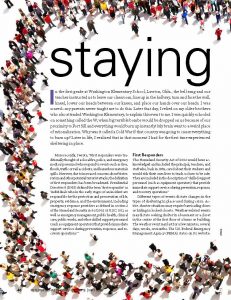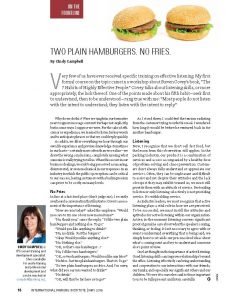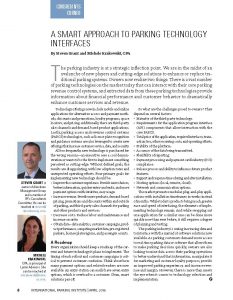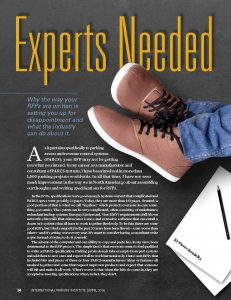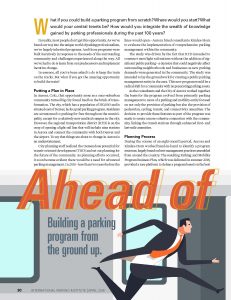by Geary Robinson
What it means to shelter in place and how to know it’s the right decision during a crisis.
In the first grade at Washington Elementary School, Lawton, Okla., the bell rang and our teacher instructed us to leave our classroom, line up in the hallway, turn and face the wall, kneel, lower our heads between our knees, and place our hands over our heads. I was scared—my parents never taught me to do this. Later that day, I relied on my older brothers who also attended Washington Elementary, to explain this event to me. I was quickly schooled on something called the W, when big terrible bombs would be dropped on us because of our proximity to Fort Sill and everything would burn up instantly! My brain went to a weird place of rationalization. Why was it called a Cold War if that country was going to cause everything to burn up? Later in life, I realized that in that moment I had for the first time experienced sheltering in place.
More recently, I wrote, “First responders were traditionally thought of as local fire, police, and emergency medical personnel who respond to events such as fires, floods, traffic or rail accidents, and hazardous materials spills. However, due to increased concerns about bioterrorism and other potential terrorist attacks, the definition of first responders has been broadened. Presidential Directive 8 (DHS) defined the term ‘first responder’ as ‘individuals who in the early stages of an incident are responsible for the protection and preservation of life, property, evidence, and the environment, including emergency response providers as defined in section 2 of the Homeland Security Act of 2002 (6 U.S.C. 101), as well as emergency management, public health, clinical care, public works, and other skilled support personnel (such as equipment operators) that provide immediate support services during prevention, response, and recovery operations.’”
First Responders
The Homeland Security Act of 2002 would have acknowledged and included the principal, teachers, and staff who, back in 1959, cared about their students and would risk their own lives to teach us how to be safe. They are included in the description of “skilled support personnel (such as equipment operators) that provide immediate support services during prevention, response, and recovery operations.”
Different types of events dictate changes in the types of sheltering in place used during crisis. Active-shooter situations may require barricading doors or hiding in locked closets. Weather-related events may dictate seeking shelter in a basement or a closet in the center of the first floor of a home or building. The weather event may last for a few minutes, several days, weeks, or months. The U.S. Federal Emergency Management Agency (FEMA) states on its website: “Taking appropriate shelter is critical in times of disaster. Sheltering is appropriate when conditions require that you seek protection in your home, place of employment, or other location when disaster strikes. Sheltering outside the hazard area could include staying with friends and relatives, seeking commercial lodging, or staying in a mass-care facility operated by disaster relief groups.
“To effectively shelter, first consider the hazard, and then choose a place in your home or building which is safe for the hazard. For example, for a tornado, a room should be selected that is in a basement or an interior room on the lowest level away from corners, windows, doors, and outside walls.”
Being conscious of your environment and surrounding while paying attention to where you are and what is occurring gives you the best opportunity to assist others and help yourself in quickly determining a safe place to go. Sheltering in place is about protecting yourself and those who are with you at the time a hazardous event occurs. The February 2013 Presidential Policy Directive (PPD-21) provides an “all hazards definition,” which helps us understand that no single definition is going to cover every situation or event: “A threat or an incident, natural or manmade, that warrants action to protect life, property, the environment, and public health or safety, and to minimize disruptions of government, social, or economic activities. It includes natural disasters, cyber incidents, industrial accidents, pandemics, acts of terrorism, sabotage, and destructive criminal activity targeting critical infrastructure.”
Why In Place
Sheltering in place is about protecting yourself and those who are with you at the time a disastrous event occurs, regardless of its origin. To do this, one would have to plan for a disaster, thinking about what actions he or she would take to ensure his or her own safety along with that of his or her family, friends, acquaintances, and co-workers. Sheltering in place may also be defined as the here and now: You finally have the time to take that long vacation to go cross-country and suddenly find yourself in the middle of very cold, icy weather on the interstate, where all traffic has come to a standstill. During the winter of 2010 in West Texas, an ice storm shut down I-20, leaving hundreds of people stranded for hours.
Are you ready to shelter-in-place in your vehicle? It’s a great example of needing to plan ahead. KnoWhat2do.com recommends having the following items in your car:
- Flashlight with extra batteries.
- First-aid kit and manual.
- White distress flag.
- Tire repair kit, booster/jumper cables, pump, and flares.
- Bottled water and non-perishable food items.
- Seasonal supplies to combat weather conditions— blankets, gloves, etc.
- Local maps.
In his book “Disaster Response and Recovery,” author David McEntire defines sheltering as “the location or relocation of evacuees or others to places of refuge, a function that is frequently required in many disasters.” In planning to shelter, we need to include those who may need assistance for physical reasons in getting and staying somewhere safe.
KnoWhat2do.com offers a brief description on the Special Needs Assistance Program (SNAP). The purpose of this program is to allow local residents who have special needs to register with their local emergency management offices. If you or someone you know has a special need during a hazardous event, encourage him or her to contact the local emergency management organization to see if it has a SNAP program.
There have been many incidents during the past several decades in which sheltering in place has worked well. One of the most recent occurred during the November 2015 bombings in Paris, France, while teams from France and Germany participated in a soccer match. Keeping the fans in the stadium may well have saved many lives; estimated attendance was approximately 80,000.
The University of Oregon uses a three-step shelteringin-place plan that defines three types of sheltering for different categories of events (chart above):
“Stay or Go: Shelter-in-Place and Secure-in-Place In rare instances immediate evacuation may not be the safest option. Examples could include security incidents in which individuals would be safest remaining in place or situations in which hazardous materials were released into the environment.
- To secure-in-place, move to an interior room and lock or barricade the door.
- To shelter-in-place, close windows and doors and seal gaps under and around them with duct tape, plastic, or towels.
- To seek shelter, go inside the nearest building and move to an interior room.”
Case Study: Baltimore
The following brief case study is the personal assessment and view of Robert Milner, CAPP, and not those of the University of Maryland, Baltimore (UMB). Because the Freddie Gray trials are still going on, this case study is based on the general effects after a shelter-in-place has been declared versus the actual details involved in how and when a shelter-in-place was declared.
UMB, founded in 1807, is the founding campus of the University System of Maryland. Located in Baltimore City, this 71-acre research and technology complex encompasses 65 buildings just west of the Inner Harbor. UMB is Maryland’s only public health, law, and human services university. The university is within walking distance of Oriole Park at Camden Yards, M&T Bank Stadium (home of the Baltimore Ravens), Royal Farms Arena, and the Baltimore Convention Center. The France-Merrick Performing Arts Center (also known as the Hippodrome Theatre) is connected to the Baltimore Grand garage—one of seven garages owned by the university.
There were several major events scheduled the night of Saturday, April 25, 2015: a large gala in the Baltimore Convention Center; an Orioles baseball game; a show at the performing arts center; and a fundraising event at UMB’s Southern Management Corporation Campus Center. After meetings and conversations that took place when protests began, the only events that continued as scheduled were the Orioles game and the Hippodrome Theatre performance. University leadership made the decision on Friday, April 24, to close at 1 p.m. on Saturday.
After city protests turned destructive, the university went into a shelter-in-place. Despite this order, the Orioles game and Hippodrome performance went on as scheduled. Depending on where your university, hospital, municipality, etc. is located, a shelter-in-place decision could affect or be affected by the surrounding environment (entities, places of business, etc.). This certainly was the situation the UMB Parking and Transportation Services faced regarding one garage used for Orioles game parkers and/or hospital staff, a second garage used for theater and Orioles parkers, and a third garage used for hospital staff, patients, and patient visitors.
Life safety came first, and property damage came second. The university assigned its police officers in SWAT gear to the various garages needing support. This became important as events continued to unfold in the area. Camden Yards issued a brief shelter-in-place toward the end of the ballgame and did not allow fans to leave. The university still had to contend with the Hippodrome performance, scheduled to let out within an hour of Camden Yards’ shelter-in-place. University police personnel were able to assist.
With the mass transit services halted, our department had to assist with getting the parking staff home, fed, etc. Through combined efforts of the police and parking, this unfortunate evening ended without any harm to life or safety. The takeaway is to not only learn what a shelter-in-place is but to understand what would be involved should your organization have to declare a shelter in place.
GEARY ROBINSON, PhD, CAPP, is director of transportation services at the University of North Texas. He can be reached at geary.robinson@unt.edu.

